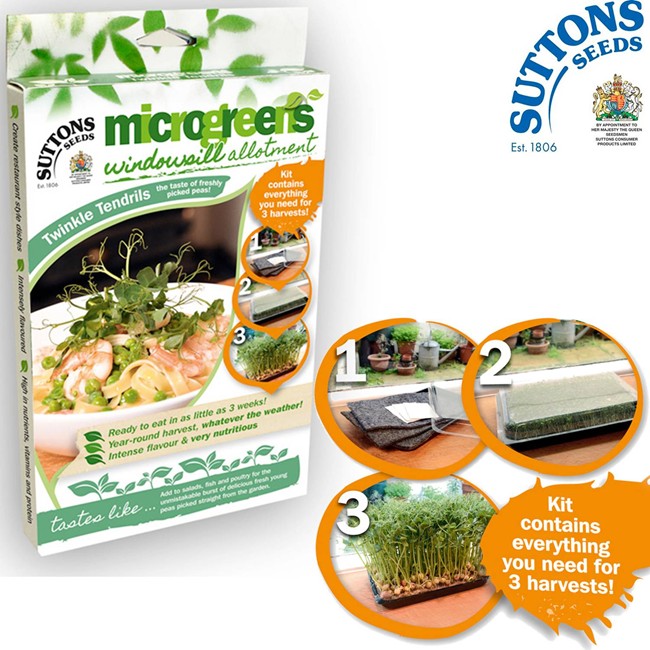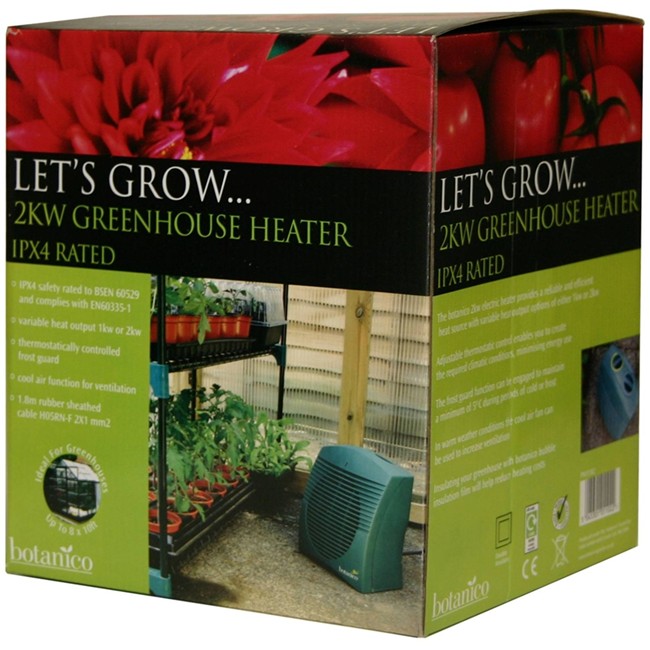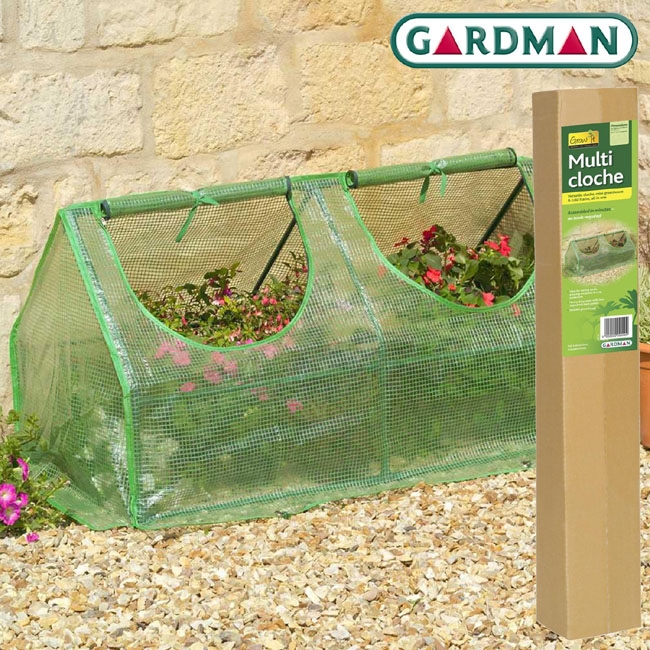The Gardener In Winter
At this time of year, the keen gardener will no doubt be perusing seed catalogues, planning projects for the new gardening year and possibly feeling quite impatient to get growing again.
Well, these colder months need not prevent you from getting your growing fix; there are vegetables and herbs that you can sow now to get a head start on the growing season, as well as some fantastic microgreens and sprouts that can be grown on your windowsill and harvested in as little as one week.
Microgreens
Originally a very trendy addition to the menus in Californian restaurants, Microgreens have proven to be more than a quirky fad. Rich in Vitamins C, E, K and A, they are a nutritious and incredibly tasty way to bring something fresh and homegrown to your plate.
As the name suggests, they are a miniature crop, ranging in size from 1” to 3” tall, and can be harvested in around 10-14 days. Birstall stock a selection of microgreen seed kits that include everything you need to get growing these amazing crops right on your windowsill.
With flavours such as freshly picked peas, wild rocket and baby spinach to complement fish, salads and poultry, or fresh broccoli to bring added depth and intensity to Asian dishes, you can bring the taste of summer to the winter table.
Sprouting Seeds
Another good crop to grow indoors are sprouting seeds, most popularly mustard and cress. Again, these can be sowed all year round and will provide tasty additions to the winter salad in about a week. They require very little other than a free-draining propagation tray and a windowsill.
Try a mix of cress, mustard, mung beans or red cabbage for variety. Better still, get the kids growing; sprouting seeds provide gratifyingly quick results for impatient little gardeners.
Sowing Early to Get Ahead
Onions
If you are keen to get started with your crops for the vegetable patch, then you could use the coming weeks to get some plants started off indoors. January is a great time to grow onions from seed, an early head start can help produce bigger bulbs, fit for exhibition!
Sow the seeds in small trays and keep them at a temperature of 19-21C (a higher temperature can adversely affect germination) until ready for planting on in pots. A greenhouse heater can help you achieve the right conditions in unheated areas.
Peppers
Peppers are another good crop to sow indoors now, they appreciate a good long growing season and our British climate can’t always provide the amount of heat and light to produce the kind of harvests usually appreciated by Mediterranean gardeners. Sow the seeds now to give them a head start, ready to transfer to a greenhouse, or a sunny spot outdoors when the weather warms up (and all risk of frosts have passed).
Propagators and Mini Greenhouses
Looking ahead to February, you can begin to sow early summer cabbage, carrots and asparagus indoors; an unheated propagator will help where indoor temperatures are still a little cool
As these are vegetables that are usually sown directly into the soil, consider using a degradable fibre pot when potting on, this will help prevent disturbing the young roots when planting out (particularly important for carrots).
Of course, if you are desperate to get out into the garden, then you can always use a mini greenhouse to provide protection to crops like broad beans that will tolerate being planted out in winter (provided there is no frost on the soil)
The multi cloche is a clever combination of mini greenhouse and cold frame, great for adding protection for tender plants, hardening off plants or helping to warm the soil ready for planting out seedlings after the frosts.
One Last Thing
If you are heading out into the garden, then remember to give some protection to yourself, too! A pair of good, hardwearing gardening gloves will keep your hands warm and protected against the cold, and a kneeler or knee pads will prevent any aches and pains caused by constant contact with cold, damp soil.
Take good care of yourself to continue enjoying your garden all through the year.
Published December 23rd, 2014 by Jordan. Article ref 3451
« December Jobs For The Garden | What Vegetables Can I Plant In January? »




